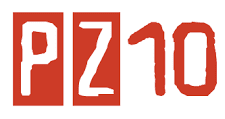What Are the Different Types of Advertising?
Advertisers pay for advertising to accomplish a wide array of
goals. Ad objectives generally boil down to long-term branding
communication or short-term direct response advertising. Branding is
about building and maintaining a reputation for your company that
distinguishes it in the marketplace. Sales promos are short-term
inducements to drive revenue or cash flow. Based on your company's
objectives, budget and target audience, you normally advertise through
one or more types of media. Calculating your return on investment in
dollars is difficult, but you need to establish measurable goals, such
as a percentage increase in awareness, to evaluate success.
Broadcast Media
Television and radio are two traditional broadcast media long used
in advertising. Television offers creative opportunities, a dynamic
message and wide audience reach. It is typically the most expensive
medium to advertise through, though. Because local affiliated stations
normally serve a wide local audience, you also have to deal with waste
when trying to target a small town marketplace. TV watchers normally
have a negative attitude toward commercials and many have DVRs at their
fingertips. Radio and TV both have fleeting messages, meaning they
disappear once the commercial spot ends. Radio is relatively affordable
for small businesses and allows for repetition and frequency. You don't
have the visual element of TV and you have to deal with a distracted
audience, since most listeners are driving.
Print Media
Magazines and newspapers are the two traditional print media.
Magazines offer a highly selective audience who is generally interested
in ads closely related to the topic of the magazine. Visual imagery is
also stronger in magazines than newspapers. You have little wasted since
magazines are very niche and you can target a narrow customer segment.
On the downside, magazines are costly and require long lead times, which
limits timely promotions. They also have limited audience reach.
Newspapers are very affordable for local businesses and allow you to
target a geographic segment if you have a universal product or service.
Newspapers are also viewed as a credible medium, which enhances ad
acceptance. You can usually get an ad placed within a day or two of
purchase. Declining circulation, a short shelf life and limited visual
creativity are drawbacks.
Support Media
Support media include several options for message delivery than
normally add to or expand campaigns delivered through more traditional
media. Billboards, transits, bus benches, aerial, directories and trade
publications are common support media. Each has pros and cons, but
collectively, they offer ways to reach a wider audience in a local or
regional market or to increase frequency of message exposure to targeted
market segments.
Direct Marketing
Direct marketing is an interactive approach to advertising that has
picked up in usage in the early 21st century. It includes direct mail,
email and telemarketing. These are direct response efforts to create an
ongoing dialogue or interaction with customers. Weekly or monthly email
newsletters, for instance, allow you to keep your brand, products and
other messages in front of prospects and customers. Telemarketing is a
way to survey customers and offer new products, upgrades or renewals.
Direct mail is the most common format of direct marketing where you send
mailers or postcards to targeted customers promoting products, deals or
promotions. Direct marketing has become more prominent because it
allows for ease in tracking customer response rates and helps
advertisers better measure return on investment.
Product Placement
Another newer advertising technique is product placement. This is
where you offer compensation to a TV show, movie, video game or theme
park to use your product while entertaining audiences. You could pay a
TV show, for instance, to depict your product being used and discussed
positive in a particular scene. This ad method is a way for companies to
integrate ads with entertainment since customers have found ways to
avoid messages delivered through more conventional media.
Internet
The Internet is used by online and offline companies to promote
products or services. Banner ads, pop up ads, text ads and paid search
placements are common forms. Banner, pop up and text ads are ways to
present an image or message on a publisher's website or on a number of
websites through a third-party platform like Google's Adwords program.
Paid search placements, also known as cost-per-click advertising, is
where you bid a certain amount to present your link and text message to
users of search engines like Google and Yahoo!


